Maria Button – a story of poverty
Pauline Alden has been researching the life of a local woman in the early 20th century, who struggled with poverty and ill-health.
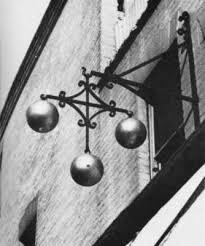 Our introduction to Maria Button comes from a story in the Yorkshire Herald on 25 January 1916.
Our introduction to Maria Button comes from a story in the Yorkshire Herald on 25 January 1916.
Maria Button of 6 Clementhorpe was charged with stealing eight pairs of boots and shoes valued at £13, the property of Charles Blyton Challoner, pawnbroker of 88 Nunnery Lane. (This building was later demolished, with changes to the junction with Bishopthorpe Rd). Challoner had known the defendant for many years, as she had been in the habit of visiting the shop. Maria pleaded guilty and was bound over for good behaviour.

Clementhorpe
What brought Maria to this desperate act?
Maria Thornhill was born on 14 October 1893 and came from a working class family. In October 1890 at the age of seven, Maria was admitted to the free school in Clementhorpe. In 1891 she was living with her family in 11 Clement St (mostly now demolished but behind the shops). Her father, William Smith Thornhill, was a coach builder and by 1901 they had moved to 49 Thorpe St, – a newer and larger property. At the age of 17 Maria was working as a confectioner’s assistant. She married Richard Button in October 1902 at 18 and their son Richard was born in 1903. By the time she was 36 Maria had given birth to nine children, four of whom died at, or soon after, birth.
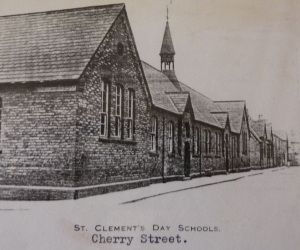
Cherry St School
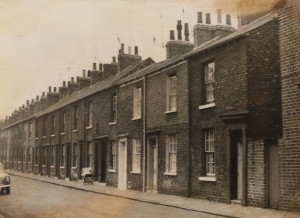
Clement St, odd numbers from Nunnery Lane end
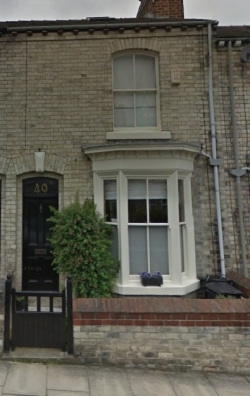 49 Thorpe St today
49 Thorpe St today
The 1911 Census shows that Maria and her family were living at 4 Chapel Yard, Swann St and two of her children were living with their grandparents, an indication that Maria and Richard could not afford to keep them. Swann St was built from the 1850s to house railway workers. Yards, including Chapel Yard, were built behind Swann St, to increase the density of housing. The standards of sanitation were low – Empire Yard contained eight houses and each yard had one tap and communal toilets. Residents had to take it in turn to hang their washing out. Swann St was eventually demolished in 1939.
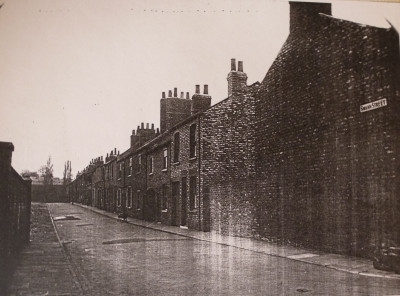 Swann St
Swann St
In January 1916 when Maria resorted to stealing she was 32 and was pregnant with her son Walter, her seventh child, who was born two months later, in March. She must have been very desperate, was well known to the pawnbrokers, and like a lot of people in her situation, regularly resorted to pawning possessions to feed and clothe the family. It was probably recognition of her situation plus the guilty plea that led to her discharge in 1916.
Richard Button was working as a goods labourer for the North Eastern Railway Company and must have had difficulty providing for his family. He had been imprisoned for debt on 4 July 1912, aged 35 and his sentence was 28 days or 32 shillings. The record indicates that he had no education and was due to be discharged on 30 July. The fine was paid on 5 July – somebody must have stepped in and helped him out.
This must have been a life on the breadline for Maria and her family, always short of money, unable to sustain pregnancies and the whole family must have suffered from poor nutrition and ill health.
On 20 October 1924 Maria died, at the age of 41. Richard was working as a timber loader at the time and they were living at 76 Clementhorpe. The death certificate gives the address where she died as 75 Huntington Road – this was the address used for the workhouse. Her younger sister Lizzie Beach was present at the death, whose address was 49 Thorpe Street. Like many of those in her position, Maria would have been taken to the workhouse as the only place to obtain any kind of medical care.

Maria’s death certificate
The cause of death for Maria was chronic nephritis, which is inflammation of the kidneys due to infection. This was one of the most common causes of death in the 1900’s. The death certificate also says she was hemiplegic, meaning that Maria was paralysed down one side of her body.
This was a terrible death at a young age and was the result of a life of extreme poverty and need. All their lives Maria, Richard and their family lived within a small area but moved often and inhabited some of the worst housing.
Sources
http://www.ancestry.co.uk
Down Nunnery Lane by the Cygnet Group
Pictures from Clements Hall History Group Archive, contributed by Philip Leeman
GRO Death Certificate
York Herald 25 January 1916

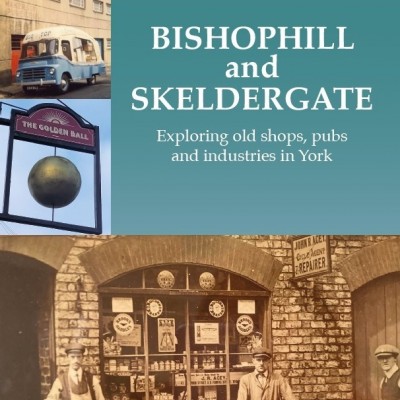


 Our introduction to Maria Button comes from a story in the Yorkshire Herald on 25 January 1916.
Our introduction to Maria Button comes from a story in the Yorkshire Herald on 25 January 1916.


 49 Thorpe St today
49 Thorpe St today Swann St
Swann St